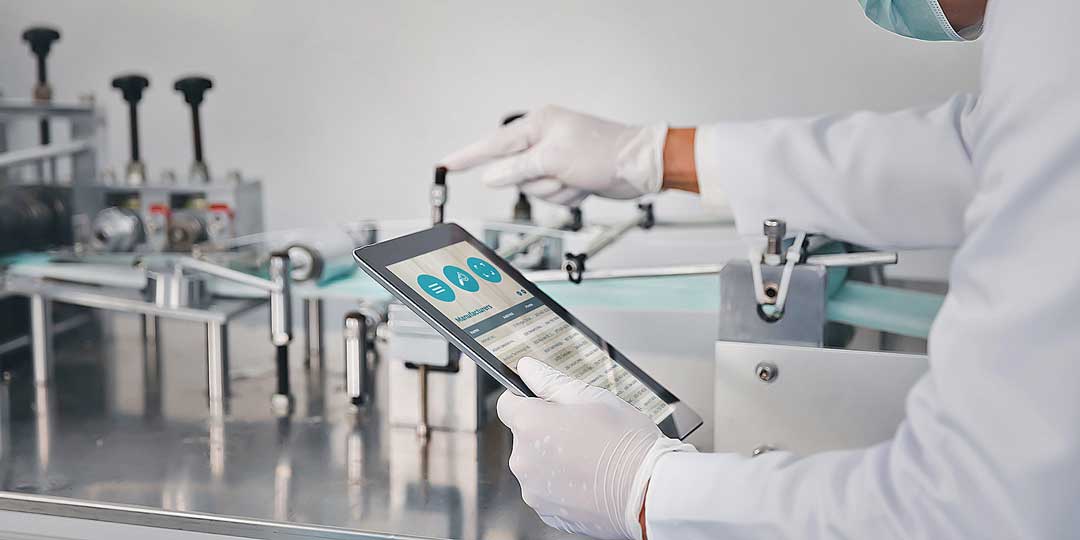Calibration Requirements of 21 CFR Parts 11 and 820
FDA Compliance for Pharma, Life Sciences and Medical Devices
What is 21 CFR?
Title 21 is the portion of the Code of Federal Regulations (CFR) that governs food and drugs within the United States for the Food and Drug Administration (FDA). 21 CFR Parts 11 and 820 are separate but related FDA regulations that govern different aspects of the pharmaceutical, biotech and medical device industries to ensure the quality, safety, and effectiveness of medical products. Part 11 deals with electronic records and electronic signatures, and Part 820 deals with establishment of a quality management system. Both parts play a role in governing how calibration of measuring instruments should be handled, and are effectively addressed by GageList FDA calibration software.
21 CFR Part 11 establishes criteria under which electronic records and electronic signatures are considered to be trustworthy, reliable, and equivalent to paper records and handwritten signatures. Key requirements include system validation, access controls, audit trails, and signature manifestations.
Also known as the Quality System Regulation, 21 CFR Part 820 establishes a quality management framework for companies to develop, produce, and distribute safe and effective medical devices. Among other areas, it covers design controls, production and process controls, corrective and preventive actions, and record-keeping. A key component of Part 820 is the calibration of inspection, measuring, and test equipment.
21 CFR Part 11 – Electronic Records and Electronic Signatures:
Calibration records are critical to maintaining product quality and often must be signed. GageList’s digital signatures feature makes GageList compliant with FDA 21 CFR Part 11 (as well as ISO 13485).
To maintain compliance with 21 CFR Part 11, you must ensure that:
- Systems and software are validated for their intended use
- Electronic records are secure, accurate, and retrievable
- Electronic signatures are unique, secure, and linked to the individual signer
- Audit trails are maintained for electronic records and signatures
21 CFR Part 820 – Quality System Regulation (QSR):
Part 820, also known as the Quality System Regulation (QSR), outlines the requirements for a quality management system for medical device manufacturers. Calibration requirements are specifically addressed in the “820.72 Inspection, measuring, and test equipment” section. To comply with 21 CFR Part 820, you must:
- Establish and maintain procedures for the calibration of inspection, measuring, and test equipment
- Ensure equipment is calibrated, inspected, and maintained according to established procedures
- Identify calibration standards used for each piece of equipment, and trace these standards to national or international standards when possible
- Document calibration activities, including the date, equipment identification, calibration standard, results, and the individual performing the calibration
- Ensure that equipment is calibrated before use and at specified intervals
- Assess and control the validity of previous inspection and test results when equipment is found to be out of calibration
- Display calibration status on the equipment and maintain calibration records

Calibration-Related Clauses in 21 CFR Parts 11 and 820
PART 820
21 CFR Part 820 outlines the requirements for a quality management system for medical device manufacturers. The specific clauses related to the calibration of inspection, measuring, and test equipment are found within Section 820.72: Inspection, Measuring, and Test Equipment. Here is a breakdown of the relevant clauses:
- 820.72(a) Control of inspection, measuring, and test equipment: Requires manufacturers to ensure that all inspection, measuring, and test equipment used for demonstrating the conformance of their product to specified requirements is controlled and calibrated.
- 820.72(b) Calibration: Covers detailed calibration requirements and includes the following subsections:
- 820.72(b)(1) Calibration Procedures: Maintain calibration procedures that include specific directions, limits of accuracy and precision, and provisions for remedial action when calibration limits are not met.
- 820.72(b)(2) Calibration Standards: Use calibration standards traceable to national or international standards. If no such standards exist, an independent reproducible standard must be used.
- 820.72(b)(3) Calibration Records: Maintain records of calibration activities, including equipment identification, calibration date, the individual performing the calibration, and the calibration results.
- 820.72(b)(4) Calibration status: Indicate the calibration status on the equipment, and make sure this information is readily available for review.
- 820.72(b)(5) Out-of-Calibration Equipment: When equipment is found to be out of calibration, manufacturers must assess the validity of previous inspection and test results and take appropriate corrective action.
To maintain compliance with 21 CFR Part 820, you should ensure that your quality management system addresses the calibration requirements detailed in Section 820.72, as well as any other relevant clauses within the regulation.
PART 11
21 CFR Part 11 focuses on electronic records and electronic signatures, which are an important feature of a viable calibration management system, ensuring proper attestation to calibration activities. Here is a breakdown of the relevant clauses from 21 CFR Part 11:
- 21 CFR Part 11 Subpart B – Electronic Records: Outlines the requirements for ensuring the reliability, integrity, and authenticity of electronic records. The following clauses are relevant to keeping electronic calibration records:
- 11.10 Controls for closed systems: Addresses controls for electronic records in a closed system and includes requirements for validation, generating accurate and complete copies, protection of records, and limiting system access to authorized individuals.
- 11.30 Controls for open systems: Outlines additional controls required for electronic records in open systems, which include ensuring the authenticity, integrity, and confidentiality of electronic records from the point of their creation to the point of their receipt.
- 21 CFR Part 11 Subpart C – Electronic Signatures: Addresses the requirements for electronic signatures, including their uniqueness, security, and linkage to the individual signer. The following clauses are relevant to electronic signatures:
- 11.50 Signature Manifestations: Requires that electronic signatures contain the printed name of the signer, the date and time of signing, and the meaning of the signature (e.g., approval, responsibility, etc.).
- 11.70 Signature/Record Linking: Requires that electronic signatures be linked to their respective electronic records, ensuring that the signatures cannot be excised, copied, or otherwise transferred to falsify an electronic record.
Software Validation Requirements of FDA 21 CFR parts 11 and 820
Both FDA 21 CFR Part 11 and Part 820 have software validation requirements to ensure the reliability, integrity, and proper functioning of software systems used in the life sciences and medical device industries.
- 21 CFR Part 11 – Electronic Records and Electronic Signatures: The software validation requirements for Part 11 are mainly concerned with ensuring that electronic records and electronic signatures are reliable and trustworthy. The relevant clause is:
- 11.10(a) Validation of systems: Requires that systems be validated to ensure accuracy, reliability, consistent intended performance, and ability to discern invalid or altered records. Validation should be performed for both closed and open systems that create, modify, maintain, archive, retrieve, or transmit electronic records subject to the regulation.
- 21 CFR Part 820 – Quality System Regulation (QSR): Software validation requirements for Part 820 apply to software used as part of production or the quality system, including software used for automated process control, monitoring, or inspection, which include calibration management. The relevant clauses are:
- 820.70(i) Automated processes: When computers or automated data processing systems are used as part of production or the quality system, the manufacturer must validate computer software for its intended use according to an established protocol, and must maintain appropriate documentation of the validation.
- 820.30(g) Design validation: In the context of design controls, this clause requires design validation to confirm that the device design meets the defined user needs and intended uses. Design validation must include software validation and risk analysis if software is incorporated into the device or used as part of the device’s manufacturing process.
To comply with both FDA 21 CFR Part 11 and Part 820, organizations must ensure that their software systems are properly validated for their intended use. This includes following a structured validation process, conducting risk analysis, documenting the validation activities, and maintaining records to demonstrate compliance. GageList provides validation documents on request to support customer validation activities.

How GageList Helps Meet FDA 21 CFR parts 11 and 820 Calibration Requirements
GageList is an online calibration management software designed to help companies manage their calibration processes, maintain records, and demonstrate compliance with regulatory requirements. GageList is specifically designed to assist companies in meeting the requirements related to calibration management and electronic records as set forth in FDA 21 CFR Parts 11 and 820:
- Centralized Calibration Management: GageList lets companies manage all their calibration activities, schedules, and records in a centralized system, making it easy to keep track of inspection, measuring, and test equipment. This aligns with the requirements of 21 CFR Part 820.72 for controlling and calibrating equipment.
- Traceability to Standards: GageList enables users to define calibration standards and maintain traceability to national or international standards, as required by 21 CFR Part 820.72.
- Calibration Records and Audit Trails: GageList stores calibration records, including equipment identification, calibration date, calibration standard, results, and the individual performing the calibration, providing necessary records for compliance with 21 CFR Part 820.72. Additionally, GageList maintains audit trails, which can help demonstrate compliance with 21 CFR Part 11 requirements for electronic records.
- Calibration Status Indication: The software displays the calibration status of each piece of equipment, ensuring that users can quickly identify equipment that is due or overdue for calibration, in line with the requirements of 21 CFR Part 820.72.
- Secure Access and Data Integrity: GageList provides secure access controls, which help ensure that only authorized users can access, modify, or delete calibration records, contributing to data integrity and compliance with 21 CFR Part 11.
- Customizable Reports: GageList offers customizable reports, which can be used to demonstrate compliance with regulatory requirements, facilitate internal audits, and support quality management initiatives.
- Electronic Signatures: GageList’s digital signature system enables users to sign off on calibration records, demonstrating their approval and responsibility and ensuring they are unique, secure, and linked to the individual.
- Signature Manifestations: GageList’s digital signature feature includes the printed name of the signer, the date and time of signing, and the meaning of the signature (e.g., approval, responsibility, etc.), which aligns with the signature manifestation requirements of 21 CFR Part 11.50.
- Signature/Record Linking: By linking digital signatures to their respective electronic calibration records, and to the responsible signatory, GageList can help ensure that signatures cannot be excised, copied, or otherwise transferred to falsify an electronic record, as required by 21 CFR Part 11.70.
- Audit Trails: With digital signatures in place, GageList provides clear audit trails for calibration records and electronic signatures, helping companies comply with 21 CFR Part 11 requirements for electronic records.
- Software Validation: It is crucial to ensure that the software is validated for its intended use, as required by both regulations. GageList enables companies to follow a structured validation process, conduct risk analysis, and maintain appropriate documentation to demonstrate compliance. Current internal validation documents are provided on request.
- The GageList Difference: GageList is recalibrating calibration with game-changing features no other platforms offer:
- Unlimited Users on all accounts at no extra cost.
- Free Mobile App for iOS and Android – manage gages anywhere, any time, on any device, online or offline.
- Simple Multi-Site Gage Management lets you manage calibration in all your locations from a single dashboard.
If you have additional questions about implementing a calibration program to support compliance with ISO 9001:2015, please feel free to reach out to our Customer Success Team.

